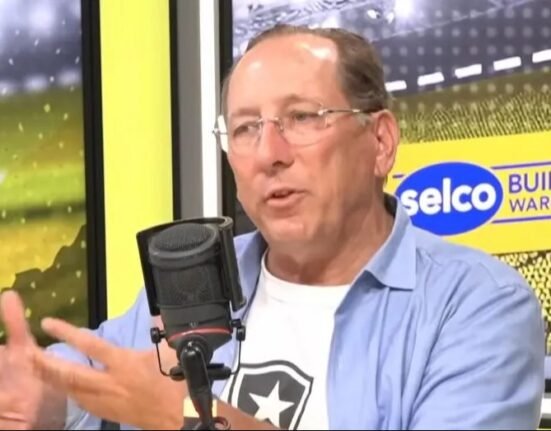Tips to buying a home in hot real estate market
Echo Fine Properties Realtor Andrea Roth has strategies to help buyers get their new home
Greg Lovett, Palm Beach Post
- Tallahassee’s housing market is experiencing increased inventory but decreased sales, creating a mixed outlook.
- Higher interest rates and affordability challenges are contributing factors to the current market dynamics.
- New construction continues, primarily in the east and northeast, with several large projects underway.
- Experts predict continued inventory increases, potentially lower median sales prices, and longer listing times for the remainder of 2025.
As buyers and sellers hit the mid-year mark, there’s good news and bad news when it comes to Tallahassee’s housing market.
There’s been a slight improvement with overall inventory rising to a 3.3 months supply from January to May — up from 2.3 months last year in the Tallahassee market. Meaning, it would take more than three months to sell every listing on the market.
Housing experts say an ideal outlook of a healthy and balanced housing market, benefiting both buyers and sellers, should be about five to six months.
“We’ve been bemoaning, probably since 2020, the fact that inventory is low,” said Steven Louchheim, CEO of Tallahassee Board of REALTORS. “Total inventory has been going up and months supply inventory … If you look at just May, it’s 3.8 months (supply inventory).
Louchheim said the Tallahassee Metropolitan Statistical area, which includes Tallahassee and some surrounding counties, hasn’t seen a nine-month inventory supply since 2013 and the supply has steadily dipped.
Affordability, interest rates play major role in what’s moving
What’s driving up housing inventory so far this year? New listings, Louchheim said.
Yet, while listings increased by 11% to 859 homes, sales decreased and led to more inventory. Also, he said, the number of closed sales are down, meaning home sales are down. In addition, the median sale price for single-family homes dropped to $315,00, representing a 3% dip.
“So you’re selling a little less, adding a little more … So then that’s not as encouraging,” Louchheim said, adding the outlook is both “encouraging and discouraging.”
“What you’d love is a lot of sales and a lot of inventory, but you can’t have all of that.
One of the contributing factors to that situation is interest rates or affordability.
“As you go higher interest rates, obviously people can afford less and qualify for less than they want to buy,” Louchheim said. “Also, if I’m in my house at a 3% mortgage rate and maybe I’d like to sell … But I’m going to go to a 6.5% mortgage rate, all of a sudden that’s not quite as attractive.”
Houses on average are staying on the market longer so far this year compared to the first half of last year. In the first five months of 2024, homes stayed on the market an average of 38 days compared to 42 days from January to May.
“In May only, and I was surprised when I pulled this number,” Louchheim said, “It was 30 days compared to 23 days last year (May 2024) … That’s fast.”
Florida’s overall housing market
Florida saw a surge in new residents migrating to the Sunshine State during the COVID-19 pandemic who came from states like California, Washington, Oregon, Nevada, Colorado, Arizona and Texas, according to economic experts.
The reason, said Brad O’Connor, chief economist for Florida REALTORS, was due to the state lifting pandemic restrictions early on compared to other states, especially when it came to opening businesses, schools and other gathering places. He said the “affordability at the time” was a major draw compared to other states.
“We had a huge surge in migrations and we quickly recovered all of the jobs that were lost at the beginning of the pandemic during that really uncertain period,” O’Connor said, adding the state saw “really strong job growth, including in areas that Florida normally doesn’t see.”
“Normally, our bread and butter is leisure and hospitality type jobs and those actually haven’t grown very much,” O’Connor said. “It’s been finance, insurance and professional business and scientific services. Think the Space Coast and everything that’s going on there.”
All of that, he said, rippled into Florida’s overall housing market. Florida homes have gone up more than 50% in value since the beginning of the pandemic.
“It still seems cheap to your typical Californian or New Yorker. But for a Midwesterner, it’s a harder price tag to swallow,” O’Connor said. “So you’ve been seen little bit less migration there than we normally see.”
O’Connor said the state’s overall inventory over the last few years has recovered once interest rates crept back up from the all-time low mortgage rage lows in 2021. Once inflation and mortgage rates began increasing, inventory went up, too.
He said homes in today’s market are up for sale statewide about the same time as compared to 2014 to 2019. But, O’Connor said the state has more on the market compared to the same period.
While he said his main focus is a statewide perspective, O’Connor said Tallahassee’s housing market is “fairly unique” compare to the rest of the state.
“Your economy in Tallahassee is driven by the state government, and several large universities,” he said. “So that makes it a little different … You’ve got a lot of public funding, tax revenue and other things driving the economy in Tallahassee that do not necessarily drive the economy elsewhere in the state.
Tallahassee often seems so insulated when the rest of the state is moving in one direction, it takes Tallahassee a little while to start following.”
Where are homes being built in Tallahassee?
The most new construction growth in Tallahassee’s housing market continues to be concentrated in the east and northeast segments of the city, with a few exceptions.
In the SouthWood area, a new Weldon Farms Subdivision has permit approval and appears to be moving dirt. Documents indicate 275 lots, with residential homes for each one, will be built on this 131-acre property along SouthWood Plantation Road by the St. Joe Company.
There are nearly 60 major proposed or ongoing developments for residential homes in various stages of permitting, according to the Tallahassee-Leon County Office of Economic Vitality. OEV reports roughly two dozen projects are categorized as being “under construction” and represent more than 3,370 lots.
Some of those projects listed as “under construction” include the following:
- Bannerman Commons — Roughly 57 acres with 139 lots off Bannerman Road
- Canopy at Welaunee Plantation — Roughly 150 acres (the overall master planned community is 500 acres) and more than 500 lots off Fleischmann Road
- Fallschase residential site — Roughly 364 acres with 669 lots of Mahan Drive and Buck Lake Road
- Pine Dove Farm — Roughly 203 acres with 139 lots off Williams Road
Here’s what housing experts are watching for the rest of 2025
Historically, homes sales increase from January to June in recent years and sales flatten for the remainder of the year. November is typically the low point of the year, followed by a slight uptick in December as the year closes out.
“So, right now we’re in the selling season in Tallahassee,” Louchheim said.
He’s predicting Tallahassee’s housing inventory will continue to increase and, possibly, see a slight decrease in median sales. Expect to see listings stay on the market longer and closed sales are going to be “little bit down,” Louchheim said.
Overall, interest rates and affordability are key factors affecting the market, real estate professionals said. The housing market, whether it’s Tallahassee or statewide, will be dependent on the mortgage rates.
“Now we’ve got all this economic uncertainty stemming from, for one thing, we’ve got this new presidential administration at the federal level that has a lot of policy ideas that have been thrown out there and they seem to change week to week,” O’Connor said, adding the passage of Trump’s “One Big Beautiful Bill Act (OBBA)” could increase the national debt.
Those factors, he said, could make long-term interest rates like mortgage rates stay at the 7% range for a 30-year fixed mortgage.
“We really need to get that number down if we want to see the housing market start to return to a normal level of rate of sales,” O’Connor said. “A lot of folks predicted by the end of this year, we’d be at six percent. I think somewhere between six and five percent is a happy place. We don’t want to get much lower than that. We don’t want to go back to the rates we were at during the pandemic.”
Contact Economic Development Reporter TaMaryn Waters at tlwaters@tallahassee.com and follow @TaMarynWaters on X.






